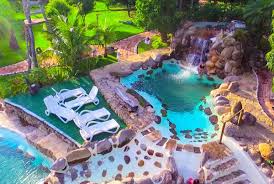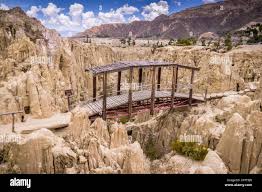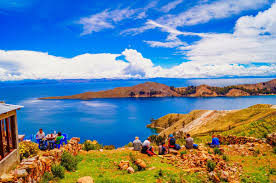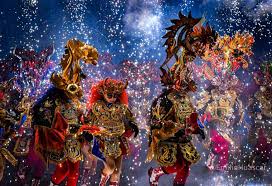Destination Guides
Guembe

Guembe is a prominent tourist destination located in Bolivia. It encompasses the Guembe BioCenter, a sprawling nature reserve and eco-park situated near the city of Santa Cruz de la Sierra. This biodiverse sanctuary offers visitors the opportunity to immerse themselves in the lush beauty of Bolivian flora and fauna. The Guembe BioCenter features a variety of attractions, including botanical gardens showcasing native and exotic plant species, walking trails through pristine tropical forests, serene lagoons ideal for relaxation, and vibrant butterfly domes where visitors can observe colorful butterflies in their natural habitat.
Additionally, the park offers recreational activities such as swimming pools, water slides, and zip lines, making it a popular destination for families and nature enthusiasts alike. Overall, Guembe BioCenter serves as both a conservation effort and a recreational haven, providing a unique experience that highlights Bolivia's rich natural heritage.
Salar de Uyuni

Salar de Uyuni is the world's largest salt flat, located in southwest Bolivia. Spanning over 10,000 square kilometers, it is a mesmerizing natural wonder that attracts travelers from around the globe. Formed by the evaporation of prehistoric lakes, the Salar de Uyuni is composed of a thick crust of salt that stretches as far as the eye can see, creating a surreal landscape that appears like an endless white desert. During the rainy season, a thin layer of water covers the salt flat, transforming it into a giant mirror that reflects the sky, creating an otherworldly and breathtaking vista.
This unique phenomenon makes Salar de Uyuni one of the most photogenic places on Earth, drawing photographers, adventurers, and curious visitors alike. Beyond its stunning beauty, the salt flat also holds significant economic importance for Bolivia, as it is a major source of salt extraction. Overall, Salar de Uyuni stands as a testament to the awe-inspiring power of nature and is a must-visit destination for anyone exploring Bolivia.
Valle de la Luna

Valle de la Luna, or the Moon Valley, is a remarkable geological formation located near La Paz, Bolivia. This otherworldly landscape is characterized by its towering clay spires, jagged ridges, and labyrinthine canyons, which have been sculpted over centuries by the erosive forces of wind and water. The valley derives its name from its striking resemblance to the surface of the moon, with its unique terrain and stark, lunar-like appearance.
Visitors to Valle de la Luna can explore the area on foot via a network of trails that wind through the maze of formations, offering panoramic views of the surrounding Andean mountains and the city of La Paz below. Sunset and sunrise are particularly magical times to visit, as the changing light casts dramatic shadows and hues across the landscape, enhancing its mystical atmosphere. Valle de la Luna is not only a geological wonder but also a cultural and recreational attraction, drawing visitors with its surreal beauty and offering a glimpse into the natural forces that shape our planet.
Lago Titicaca

Lake Titicaca, situated in the Andes Mountains on the border of Bolivia and Peru, is the largest lake in South America by volume and one of the highest navigable lakes in the world. Revered by indigenous cultures for centuries, it holds significant cultural and spiritual importance, with numerous myths and legends associated with its origins. The lake is renowned for its stunning blue waters, surrounded by snow-capped peaks and picturesque landscapes.
The shores of Lake Titicaca are dotted with traditional villages and ancient archaeological sites, such as the famous floating islands of the Uros people, who construct their homes from totora reeds. Additionally, the lake is home to several indigenous communities, including the Quechua and Aymara peoples, who maintain traditional ways of life and offer visitors insights into their rich cultural heritage. Boat trips across the lake provide opportunities to explore its islands, visit local communities, and witness breathtaking sunsets over the Andean peaks, making Lake Titicaca a must-visit destination for travelers seeking both natural beauty and cultural immersion in Bolivia.
Carnaval de Oruro

The Carnaval de Oruro in Bolivia is one of the most significant cultural and religious festivals in South America, celebrated annually in the city of Oruro. Rooted in indigenous Andean traditions and Catholicism, this vibrant event pays homage to the Virgin of Socavón, blending pre-Hispanic rituals with colonial influences. The centerpiece of the carnival is the colorful and elaborate procession of thousands of dancers, musicians, and performers parading through the streets for up to 20 continuous hours.
Participants don ornate costumes representing various mythical and historical figures, accompanied by lively music and traditional dances that showcase Bolivia's diverse cultural heritage. The celebration also features rituals such as the "Diablada," a symbolic battle between good and evil, and the "Morenada," which honors African heritage. Alongside the religious and cultural significance, the Carnaval de Oruro is a vibrant display of community spirit and artistic expression, attracting spectators from around the world to experience the spectacle of this UNESCO-recognized Intangible Cultural Heritage event.